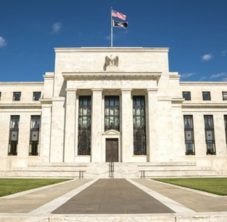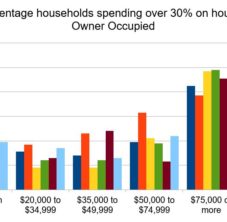Montgomery County Executive Marc Elrich doesn’t seem to understand or even be familiar with basic cost-push inflation or wage-price spiral theory. Or, if he is familiar with Keynesian economic policy (which he seems to be, based on his rapacious desire for more government “stimulus” spending in 2020-22), CE Elrich seems to think these ideas of the Keynesian school of economic theory do not apply in Montgomery County or Maryland. Or maybe Keynesian ideas only work some of the time?
Overall, the County Executive presents a totally incoherent front in the battle against local inflation and affordability for Montgomery County families.
In his March 2 message to Montgomery County residents, CE Elrich lauds that “I was proud to sponsor two bills to raise the wage. Many workers in Montgomery County have been at this level since the summer of 2021, and starting this summer, the minimum wage for large companies in Montgomery County will increase to $16.70 per hour. Especially important: the wage is adjusted for inflation after it hits $15.”
He is now pushing for a “Fair Wage Act” state-wide to ” accelerate an increase in the State minimum wage rate to $15 per hour on Oct. 1, 2023.”
Is CE Elrich familiar at all with wage-price spiral theory?
“When workers receive a wage hike, they demand more goods and services and this, in turn, causes prices to rise. The wage increase effectively increases general business expenses that are passed on to the consumer as higher prices. It is essentially a perpetual loop or cycle of consistent price increases.”
Even if one doesn’t necessarily agree with the first part of this theory, there is zero doubt that increased labor costs will increase business overhead (employee labor costs aren’t given some sort of “special privilege in management accounting or business financial planning) and 99.9% of businesses aren’t going to simply “eat” this higher overhead cost without at least attempting to claw back some profit via the end consumer — via higher prices. And then the loop starts all over again.
Sure, in very competitive industries this might be more difficult to do for a prolonged time. But there is zero doubt that some % of the increase in labor will come back to the end consumer via higher prices. You can see this at the grocery store, the convenience store, the restaurant, the movie theater and more. Why on earth would a movie theater simply accept a 10% labor cost hike without attempting to then make more on food or movie tickets to offset it? What happens when going to a movie then simply costs too much then for a middle class MoCo family?
CE Elrich says that “As I see it, the minimum wage is ultimately about working people being able to earn enough to put a roof over their heads, feed their families and not have to choose between food on the table and medical visits.”
Everything single thing he’s described here (rent, food, healthcare costs) has been inflated via his government policy or artificial MoCo restrictions and local “zoning” wherein we can’t build a dang house or apartment building on literally 93,000 acres of land in Montgomery County.
How is Montgomery County going to thrive when the County Executive seemingly doesn’t understand basic economic concepts or second order effects from government policy?
Get ready for more $25 pizza in MoCo:
According to Slice’s new report on its member restaurants, the price of a large cheese pizza rose year-over-year in all but five states. Nationwide, the average price for a pie rose more than a dollar — from $16.74 in 2021 to $17.81 in 2022.
“Pizzerias have a very thin profit margin — these are mom-and-pop shops, with, like five or 10 part-time employees,” Morash said. “They can’t afford to eat the cost, so it gets passed on.”





